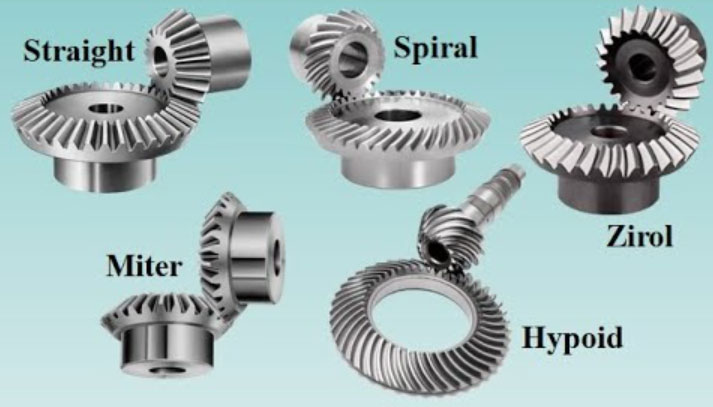The design of bevel gears has evolved significantly over time, driven by advancements in technology, materials, and manufacturing processes. Let’s explore the evolution of bevel gear design from history to the present:

- Early History: Bevel gears have been in use for centuries, with evidence of their existence dating back to ancient civilizations such as the Egyptians and Greeks. Early bevel gears were typically handcrafted from wood or other materials and were primarily used in simple mechanisms like watermills and windmills.
- Industrial Revolution: During the Industrial Revolution in the 18th and 19th centuries, the demand for bevel gears increased with the growth of industrial machinery. The design of bevel gears started to incorporate more precise machining techniques, enabling the production of gears with better accuracy and performance.
- Tooth Profile Development: In the late 19th and early 20th centuries, advancements in gear theory and understanding of tooth profiles led to the development of various bevel gear tooth profiles. The straight-toothed bevel gear was commonly used initially, but it had limitations in terms of noise, efficiency, and load-carrying capacity.The introduction of curved-tooth bevel gears, such as the spiral bevel and the hypoid bevel gears, revolutionized bevel gear design. These tooth profiles allowed for smoother engagement, improved load distribution, reduced noise, and increased torque capacity. Spiral bevel gears, in particular, gained popularity due to their superior performance in high-speed applications and their ability to accommodate misalignment.
- Computer-Aided Design (CAD) and Simulation: With the advent of computer-aided design (CAD) and advanced simulation tools, bevel gear design and optimization became more efficient and accurate. Engineers could now model and analyze gear systems, simulate their behavior under different operating conditions, and optimize gear parameters for performance, efficiency, and strength.Computerized simulation also enabled the development of advanced gear tooth profiles, including the generation of optimized tooth surface geometry. This led to improved gear meshing characteristics, reduced noise and vibration, and enhanced gear performance.
- Materials and Manufacturing Advances: The evolution of bevel gear design has been supported by advancements in materials and manufacturing processes. The availability of high-strength alloy steels, heat treatment techniques, and surface coatings has improved the durability, wear resistance, and load-carrying capacity of bevel gears.Modern manufacturing technologies, such as CNC machining, gear cutting machines, and advanced gear inspection equipment, have greatly enhanced the precision, repeatability, and efficiency of bevel gear production. These technologies have enabled the production of complex gear geometries, high-quality tooth surfaces, and improved gear accuracy.
- Customization and Application-Specific Design: Today, bevel gears are designed to meet specific application requirements. Gear manufacturers can customize bevel gears to suit various applications, including automotive differentials, aerospace systems, robotics, marine propulsion, and industrial machinery. This customization involves optimizing tooth profiles, gear ratios, materials, and coatings for specific performance criteria such as load capacity, efficiency, noise reduction, and longevity.
In summary, the design of bevel gears has evolved from simple handcrafted designs to sophisticated, high-performance gear systems. Advances in tooth profile development, computer-aided design, materials, manufacturing processes, and customization have contributed to the improved performance, efficiency, and reliability of bevel gears in modern machinery.
